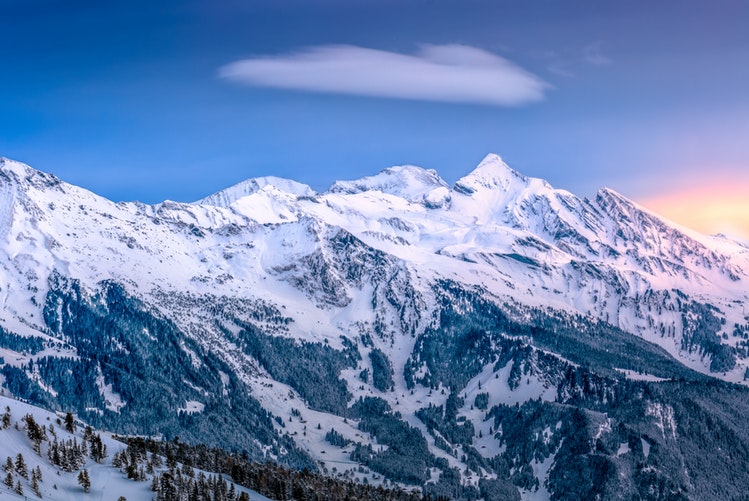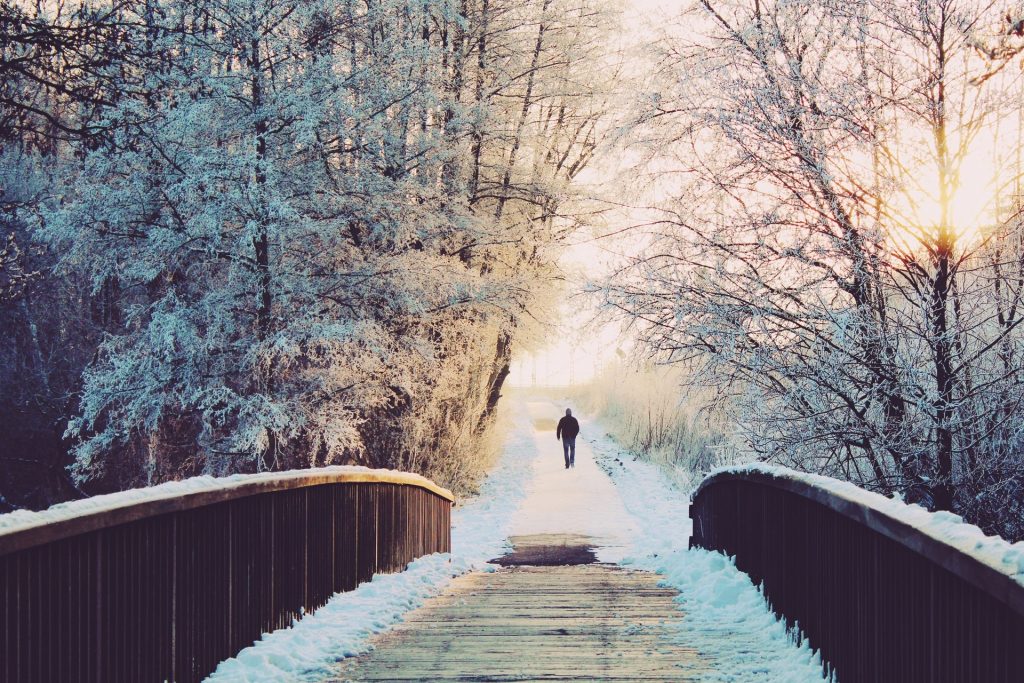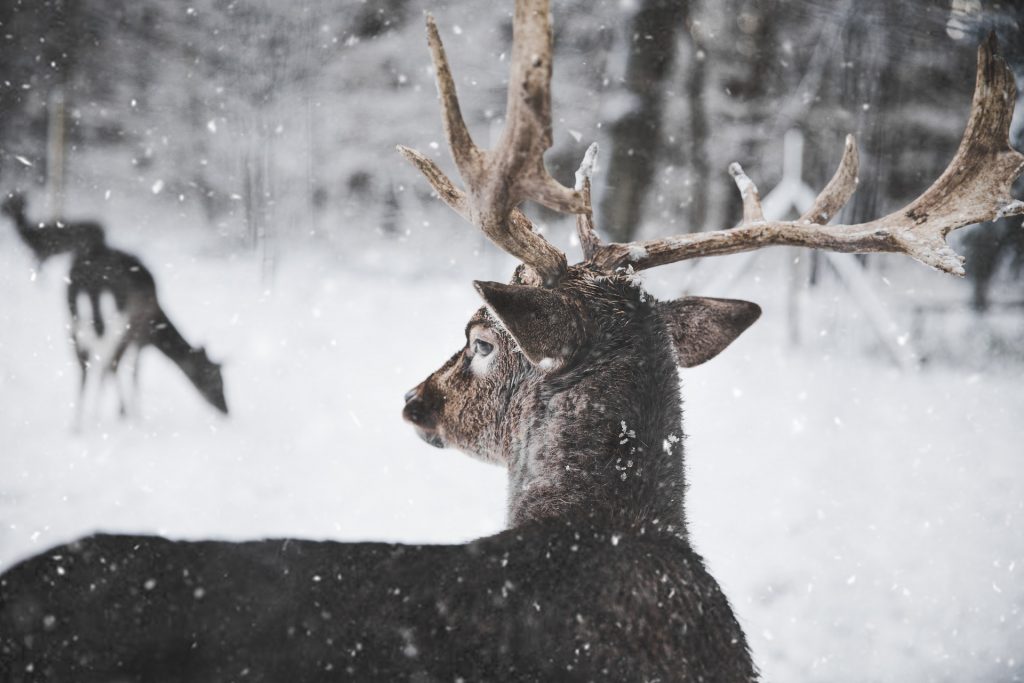When the winter strikes, some landscape photographers head indoors and wait for the spring to get their cameras out again. If you’re one of those that doesn’t mind getting wet, cold, or enduring icy conditions for the image, then you may not be fully happy with the results that you are getting. Use these tips and techniques to ensure that you can shoot better in winter weather.

photo by: Samuel Ferrara
Did you know that snow actually provides some of the best possible lighting conditions that a photographer could ask for? Because it is bright white, and because it contains many smaller crystals which also reflect light, it acts almost as a fill-in light for all of your shots. During and after the snowfall, the sky also tends to be filled with an even light, which makes the reflection even stronger.
All of this means that when snow is forecast, you should be getting your camera ready. It’s a great way to incorporate some portraiture into your portfolio as well, as the light coming from all directions gives a fantastic natural setting that will flatter your model.
There are other lighting considerations that come into play in the winter, too. The sun sets earlier and rises later, which means you have less time to play around when traveling to a location. Do your research on timings so you can arrive just as the sun is rising for those first golden rays of light, and plan to stay until the sunset bathes everything in orange and pink. You should also bear in mind that the available natural light may be dimmer than at other times of the year, especially if the sky is overcast. Watch out for the weather forecast and plan to shoot on days which might hold some winter sun.
Protect yourself
When you are shooting your landscapes, you want to be thinking about shooting landscapes – not feeling distracted by anything else. That means you need to protect yourself from the elements, by preparing before you go out to shoot.
Make sure that you have waterproof clothing and shoes – you can easily buy cheap coats and trousers to slip on over your clothes as needed. You also need an insulating layer to guard against low temperatures and sharp winds, so thermals are a great option to keep you warm without making you feel bulky or restrained. A hat will help keep more of your body heat inside and divert rain or snow away from your face, and gloves are a must to stop your fingers freezing up. Try gloves designed for smartphone use, which have special pads in the fingertips, to help you control the camera easily.
Don’t forget to protect your camera, too. Investing in a waterproof cover will mean you don’t have to worry about rain or snow ruining your equipment, so you can just get on with it and shoot.
Prepare your equipment
Having to cut your shoot short because of an equipment malfunction will be no fun at all, so make sure that you do everything you can to stop it from happening. Especially if you are stepping into snowy conditions and freezing temperatures, there are some things that you need to do differently than normal.
One thing to be aware of is that batteries tend to discharge faster in the cold. This means you should bring extras, and try to have a warm place to put them when not in use. If your battery dies quicker than expected, you can try holding it or putting it into a pocket close to your skin, to warm it up with your body heat.
Don’t change your lens outdoors in snowy weather, as this can bring moisture into either the lens or the body. You should also be careful about how you bring your equipment back into a warm environment. Encase them in a sealed plastic bag before you enter, and then leave them a few hours to acclimatize in a cooler area before you get them out.
Finally, invest in a waterproof container for your SD cards. The last thing you want is to drop a card into the snow and watch all of your photos disappear into the snow.
Look for colour

photo by: pexels.com / CC0
One of the challenging things about winter photography is that snow is all one colour: white. In some cases, this can create a striking photograph. However, more often than not, it can make the landscape look uninteresting and flat. So, in order to solve this, start training yourself to look for colour.
Colour can enter the equation in a number of ways. One way you can do it is to wake up early for the golden hour or wait for those pink and orange tones of sunlight that we discussed earlier. Those tones can reflect from the snow, creating gorgeous imagery.
Another way is to look for features in the landscape that add that colour. Perhaps there is a colourful ski chalet that stands out on the mountainside, or a hiker walking by in a bright red jacket. If the snow has fallen early, you might find colour in the plant life that sticks out above that white coverage.
Even if your winter weather does not involve snow, but only rain and cold temperatures, you can still use this technique. Rainy and overcast skies tend to lend a grey palette to everything, so those pops of colour and bright light will really bring a focal point to the image and make it more interesting.
Watch your colour balance

photo by: from Pexels / CC0
Your colour balance should be changed to cool settings, so that you are conveying the winter mood accurately with your images. Under a warm colour balance, the image won’t look right – and it certainly won’t convey how cold you were while you were taking the shot!
Colour balance can be changed in post-production if you forget to change it in-camera. You can alter RAW files easily, but if you only have JPGs or another file format available, then it comes down to the use of filters. These will help you to convert that colour temperature back to how it should be.
If you want to convey a scene which is completely washed out with snow, you can also deliberately overexpose your image – just by a couple of stops, nothing too dramatic. This will ensure that the image is as light as possible and gives this sense of the whiteout from the snow, without losing too much detail.
Shooting in the winter is all about adapting to the specific circumstances that come with cold and snow. So long as you master these tips, your images should improve greatly.